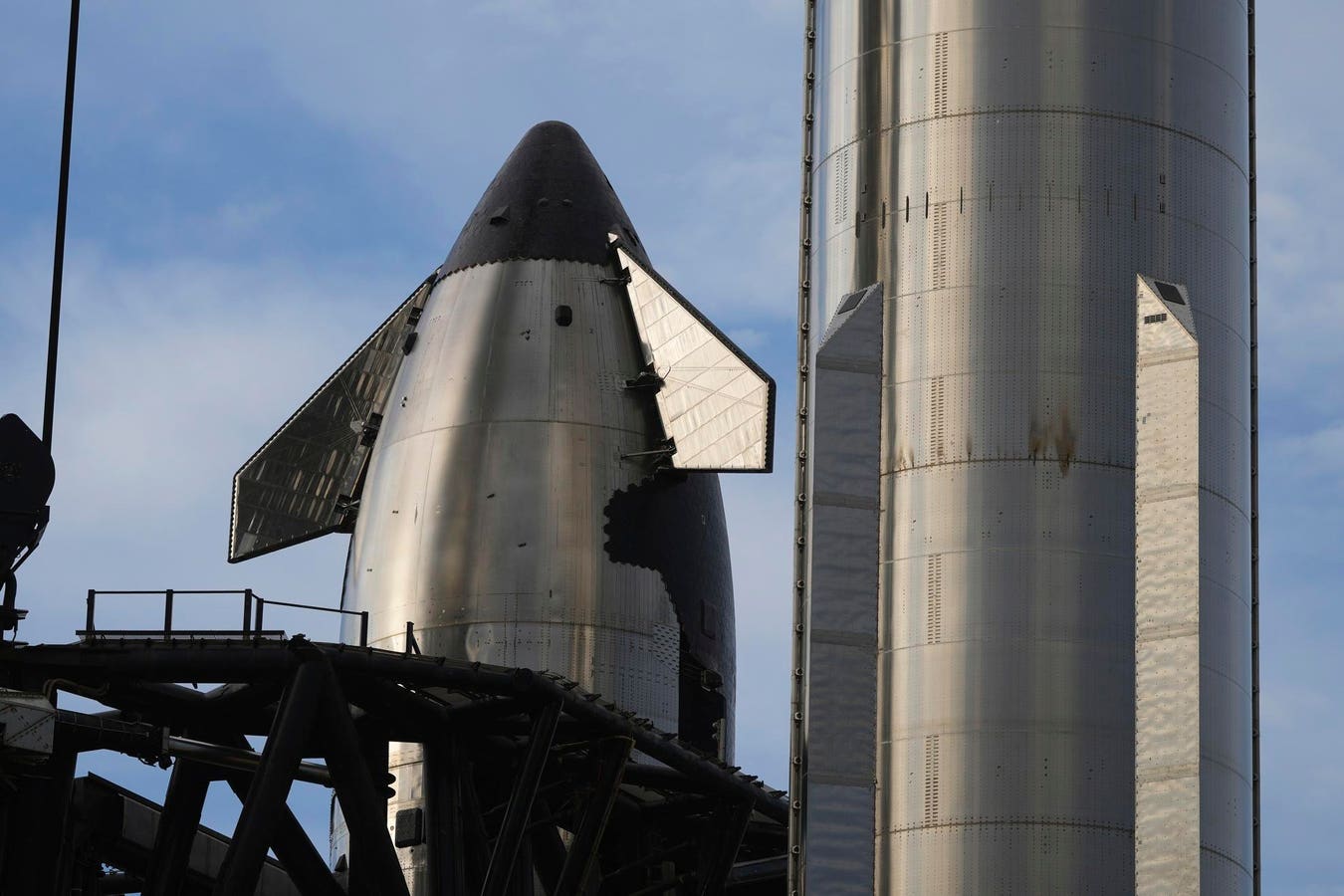SpaceX’s mega rocket Starship is prepared for a test flight from Starbase in Starbase, Texas, Saturday, Aug. 23, 2025. (AP Photo/Eric Gay)
Copyright 2025 The Associated Press. All rights reserved
Starship, the rocket that the world’s richest man hopes will take NASA astronauts back to the moon and humanity on to Mars took a breath on Sunday is now set to blast off from Starbase, Texas in just a few hours.
The tenth flight of Starship was originally set for Sunday but was scrubbed about 20 minutes before planned launch time “to allow time to troubleshoot an issue with ground systems.”
SpaceX has yet to fully recover an intact ship or booster from any of Starship’s previous nine flights, although it did come within about a kilometer of a successful splashdown in the Gulf of Mexico at the end of Flight 9. This fact and the dramatic visuals of explosions from previous attempts have led to these test flights frequently being labeled as “failures” in media coverage and driven a discussion calling the development of Starship itself into question.
It’s important to note, however, that SpaceX has actually achieved its primary mission objectives on four or five of Starship’s nine test flights, depending on how you break it down. In many ways, Starship’s development mirrors that of its predecessors, the Falcon-1 and workhorse Falcon 9 rockets, which took several tries to complete missions and stick the landing.
Starship is a considerably more complex vehicle and arguable deserves even more grace as SpaceX and its engineers iterate and undertake a dramatic and explosive trial and error process in full view of the public.
That said, Musk has long had a problem with setting realistic timelines and expectations for his ambitions and Starship is no exception. Musk once aimed to send a crewed Starship to the moon as early as 2023, but we still seem rather far from achieving that milestone here in the second half of 2025.
Changes Made For Starship Flight 10
Earlier this month, SpaceX posted a report on Flight 9, which saw Starship lost as it re-entered Earth’s atmosphere and the Super Heavy booster disintegrate as it approach the Gulf of Mexico.
In an email, the company says “hardware and operational changes have been made to increase reliability’” as a result of the report’s findings.
For Monday’s flight SpaceX plans to again attempt Starship’s first payload deployment, which was skipped during Flight 9. The booster will attempt a splashdown in the Gulf of Mexico and Starship will similarly head for a “landing” in the Indian Ocean.
The entire affair is set for a 6:30 p.m. CDT launch, with the SpaceX Starship livestream set to start about a half-hour beforehand.









